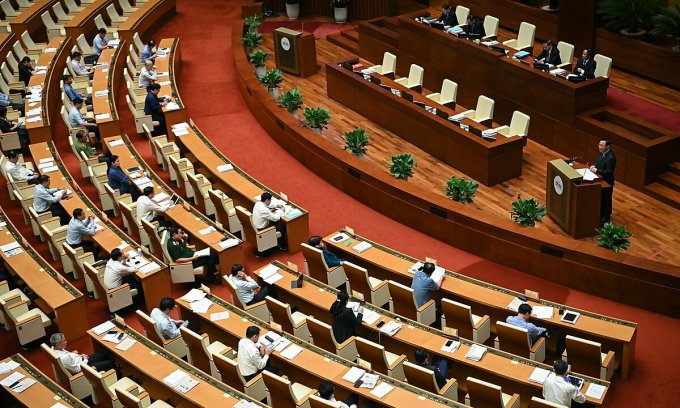Limit for converting perennial crops to residential land in Vietnam

Currently, there are many individuals and households converting land to grow perennial crops into residential land. However, how much of the land for perennial crops can be converted into residential land is a difficult question to be answered. So about the matter “Limit for converting perennial crops to residential land in Vietnam” Let’s find out with LSX in the article below.
Legal grounds
- Land Law 2013
- Decree 43/2014/ND-CP
- Circular No. 27/2018/TT-BTNMT
- Circular 01/2021/TT-BTNMT
- Circular 30/2014/TT-BTNMT
What is residential land?
According to the provisions in Appendix I issued together with Circular No. 27/2018/TT-BTNMT dated December 14, 2018 of the Minister of Natural Resources and Environment, providing for statistics, land inventory and mapping Current status of land use regulations on residential land are as follows:
Residential land is land for construction of houses, works in service of life and gardens and ponds attached to houses which have been recognized as residential land. In case the land plot with gardens and ponds attached to houses has not been recognized, the residential land area shall be temporarily determined by the new residential land allocation quota as prescribed by the provincial People’s Committee.
Residential land includes residential land in rural areas and residential land in urban areas.
In case residential land is used for non-agricultural production and business purposes (including mixed-purpose apartment buildings), in addition to statistics according to residential land purposes, statistics must also include secondary purposes. non-agricultural production and business land, according to the residential land purpose, it must also include the secondary purpose of non-agricultural production and business land.
Rural residential land means residential land within the administrative boundaries of communes, except for residential land in new urban areas which has been implemented according to development plannings of districts, cities, towns and townships but is still under the management of the commune.
Urban residential land means residential land within the administrative boundaries of wards and townships, including residential land in new urban areas which has been implemented within the scope of development plannings of districts, cities, towns and cities. The township has been approved by a competent state agency, but up to the time of statistics and inventory, it is still managed by the commune.
What type of soil is perennial?
According to the provisions in Appendix I issued together with Circular No. 27/2018/TT-BTNMT dated December 14, 2018 of the Minister of Natural Resources and Environment, providing for statistics, land inventory and mapping Current status of land use regulations on land for planting perennial crops are as follows:
Land for perennial crops is land used for the purpose of growing plants that are planted once, grown and harvested for many years according to the provisions of Joint Circular No. 22/2016/TTLT-BNNPTNT-BTNMT dated 30 June 2016 of the Ministry of Agriculture and Rural Development – Ministry of Natural Resources and Environment, including:
– Perennial industrial plant: A perennial plant for products used as raw materials for industrial production or must be processed to be used, such as rubber trees, cocoa, coffee, tea, cashews, pepper, etc. coconut, etc;
– Perennial fruit trees: Perennial trees for products that are fruits to eat fresh or combined with processing such as pomelo, orange, rambutan, plum, apricot, mangosteen, longan, durian, litchi, mango, etc. ;
– Perennial medicinal plant is a perennial plant for medicinal products such as anise, cinnamon, bean curd, camphor, ginseng, etc.;
– Other perennial plants are perennial trees for timber, shade, and landscaping (such as cycads, eucalyptus, mother of pearl, acacia, milkweed, hibiscus, sesame buds, etc.); including the case of mixed planting of many different types of perennial plants or the intermingling of perennials and annuals.
In case the land for planting perennial crops is combined with aquaculture and providing services, in addition to making statistics for the purpose of growing perennial crops, additional statistics must also be made for other purposes such as aquaculture, production, non-agricultural business (in case of simultaneous use for both other purposes, statistics shall be based on both purposes).
Is it possible to convert land for perennial crops to residential land?
According to the provisions of Article 57 of the Land Law 2013, the change of land use purpose is as follows:
– Cases of change of land use purpose that must be approved by a competent state agency include:
+ Change of land for rice cultivation to land for growing perennial crops, land for afforestation, land for aquaculture, land for salt production;
+ Change of land for planting other annual crops to land for saltwater aquaculture, salt production, and aquaculture land in the form of ponds, lakes and lagoons;
+ Change of special-use forest land, protection forest land, production forest land to use for other purposes in the group of agricultural land;
+ Converting agricultural land to non-agricultural land;
+ Converting non-agricultural land allocated by the State without land use levy to non-agricultural land allocated by the State with land use levy or leased land;
+ Converting non-agricultural land which is not residential land to residential land;
+ Transfer of land for construction of non-business works, land used for public purposes for business purposes, land for non-agricultural production and business that is not commercial or service land to commercial or service land; converting commercial, service, and non-business construction land to land for non-agricultural production establishments.
According to the provisions of Clause 1, Article 10 of the 2013 Land Law, we know that perennial crop land is a type of land belonging to the group of agricultural land, so it will be allowed to convert from perennial crop land to residential land.
Limit for converting perennial crops to residential land in Vietnam
According to the provisions of Article 14 of the 2013 Land Law, the State decides the land use purposes as follows: The State decides the land use purposes through the land use planning, the land use plan and allows the land use purpose. permission to change land use purpose.
According to the provisions of Article 15 of the 2013 Land Law, the State regulates land use quotas and land use durations.
The State shall prescribe land use quotas, including agricultural land allocation quotas, residential land allocation quotas, residential land use rights recognition quotas and agricultural land use right transfer quotas.
The State shall prescribe the land use term in the following forms:
+ Long-term stable land use;
+ Use of land for a limited time.
According to the provisions of Article 52 of the 2013 Land Law, the grounds for land allocation, land lease, and permission for land use purpose change are as follows:
– The annual land use plan of the district has been approved by the competent state agency.
– Demand for land use expressed in investment projects, applications for land allocation, land lease, change of land use purpose.
According to the provisions of Article 59 of the 2013 Land Law, the authority to allocate and lease land and permit the change of land use purpose is as follows:
– Provincial-level People’s Committees shall decide on land allocation, land lease, or permission to change land use purposes in the following cases:
+ Land allocation, land lease, permission to change land use purpose for organizations;
+ Land allocation for religious establishments;
+ Allocate land to overseas Vietnamese and foreign-invested enterprises as prescribed in Clause 3, Article 55 of the Land Law;
+ Leasing land to overseas Vietnamese and foreign-invested enterprises as prescribed at Points dd and e, Clause 1, Article 56 of the Land Law;
+ Leasing land to foreign organizations with diplomatic functions.
The district-level People’s Committees shall decide on land allocation, land lease, and permission to change the land use purpose in the following cases:
+ Land allocation, land lease, permission to change land use purpose for households and individuals. In case of leasing land to households or individuals, permitting the change of agricultural land use purpose to use for commercial or service purposes with an area of 0.5 hectares or more, a written consent must be obtained. approval of the People’s Committee of the province before making the decision;
+ Allocate land to residential communities.
– Commune-level People’s Committees lease land belonging to the agricultural land fund for public purposes of communes, wards and townships.
The agency competent to decide on land allocation, land lease, or permission to change the land use purpose specified in Clauses 1 and 2, Article 59 is not authorized.
Thus, through all of the above regulations, we know that there is currently no specific number on the limit for converting perennial crops to residential land, but this limit will have to depend on the land use plan. annually at district and provincial levels in each locality. Detailed information is specified in Circular 01/2021/TT-BTNMT, you can refer to the regulations on land use plans.
Procedures for converting land for perennial crops to residential land
Step 1. Prepare documents.
The composition of the dossier is specified in Clause 1, Article 6 of Circular 30/2014/TT-BTNMT including:
– Application for change of land use purpose;
– Certificate of land use right or Certificate of ownership of houses and residential land use rights or Certificate of land use rights, ownership of houses and other land-attached assets;
– Registration book; identity card or citizen identification card.
Step 2. Submit application.
Agency receiving dossiers: Department of Natural Resources and Environment.
Step 3. Settlement of records.
– During this period, land users must pay attention to fulfill their financial obligations as prescribed.
– Receive notice of the amount to be paid, pay at the tax office and keep the invoice to present on request.
Step 4. Return the result.
Time limit for settlement
+ No more than 15 days (as prescribed in Clause 40, Article 2 of Decree No. 01/2017/ND-CP);
+ No more than 25 days for communes in mountainous, island, deep-lying and remote areas, areas with difficult socio-economic conditions.
Note: Land use fee payable when transferring land for planting perennial crops:
According to Point b, Clause 2, Article 5 of Decree 45/2014/ND-CP stipulating: If you change from agricultural land allocated by the State without land use levy to residential land, the land use levy will be equal to the difference between the land use history and the land use levy. land use is calculated at the residential land price with the land use levy calculated at the agricultural land price at the time of the decision on change of purpose issued by the competent state agency.
Land use levy is determined as follows: payable land use levy = residential land use levy – agricultural land use levy
Services of LSX
Prestigious professional services: Firstly, the team of consultants and consultants for many years in the field of civil status, and customer support.
On-time: Certainly, with the motto “Get your lawyer right at your fingertips”, we ensure the service always performs on time. The rights and interests of customers always come first.
Cost: Besides, LSX’s service costs are highly competitive; depending on the nature of the particular case. So, we want our guests to have the best possible service experience. Therefore, costs which guaranteed to be the most suitable and economical for customers.
Confidentiality of client information: Finally, all brand information of client LSX will be 100% confidential.
Please contact us immediately if you have any questions about “Limit for converting perennial crops to residential land in Vietnam”
Contact LSX
Finally, hope this article is useful for you to answer the question about “Limit for converting perennial crops to residential land in Vietnam” If you need any further information, please contact LSX Law firm: at +84846175333 or Email: [email protected]
Please see more
- Is handwritten paper for land donation in Vietnam valid?
- Sequence of recovering encroached land in Vietnam
- Land valuation income method in Vietnam
Frequently asked questions
According to the provisions of Article 129 of the Land Law 2013, the allocation limit of land for planting perennial crops to each household or individual must not exceed 10 hectares for communes, wards and townships in the delta; no more than 30 hectares for communes, wards and townships in the midland and mountainous areas.
Limits for receiving the transfer of land use rights to grow perennial crops of households and individuals
According to the provisions of Article 44 of Decree 43/2014/ND-CP as follows:
Land for perennial crops:
a) Not more than 100 hectares for communes, wards and townships in the delta;
b) Not more than 300 hectares for communes, wards and townships in the midland and mountainous areas
According to the provisions of Article 44 of Decree 43/2014/ND-CP as follows:
Land for perennial crops:
a) Not more than 100 hectares for communes, wards and townships in the delta;
b) Not more than 300 hectares for communes, wards and townships in the midland and mountainous areas
Based on the land fund, local characteristics and needs, each commune, ward and township may set up a fund of agricultural land used for public purposes not exceeding 5% of the total area of land for growing annual crops and land. planting perennial crops, land for aquaculture to serve the local public needs.
Agricultural land returned or donated by organizations, households or individuals with use rights to the State, reclaimed land or recovered agricultural land is the source to form or supplement the agricultural land fund for use. for public purposes of communes, wards and townships.
For places where the agricultural land fund used for public purposes exceeds 5%, the area beyond 5% shall be used for construction or compensation when using other land for construction of works. local public; assigned to households and individuals directly engaged in agricultural production or aquaculture in the locality that have not yet been allocated land or lack production land.
Conclusion: So the above is Limit for converting perennial crops to residential land in Vietnam. Hopefully with this article can help you in life, please always follow and read our good articles on the website: lsxlawfirm.com




